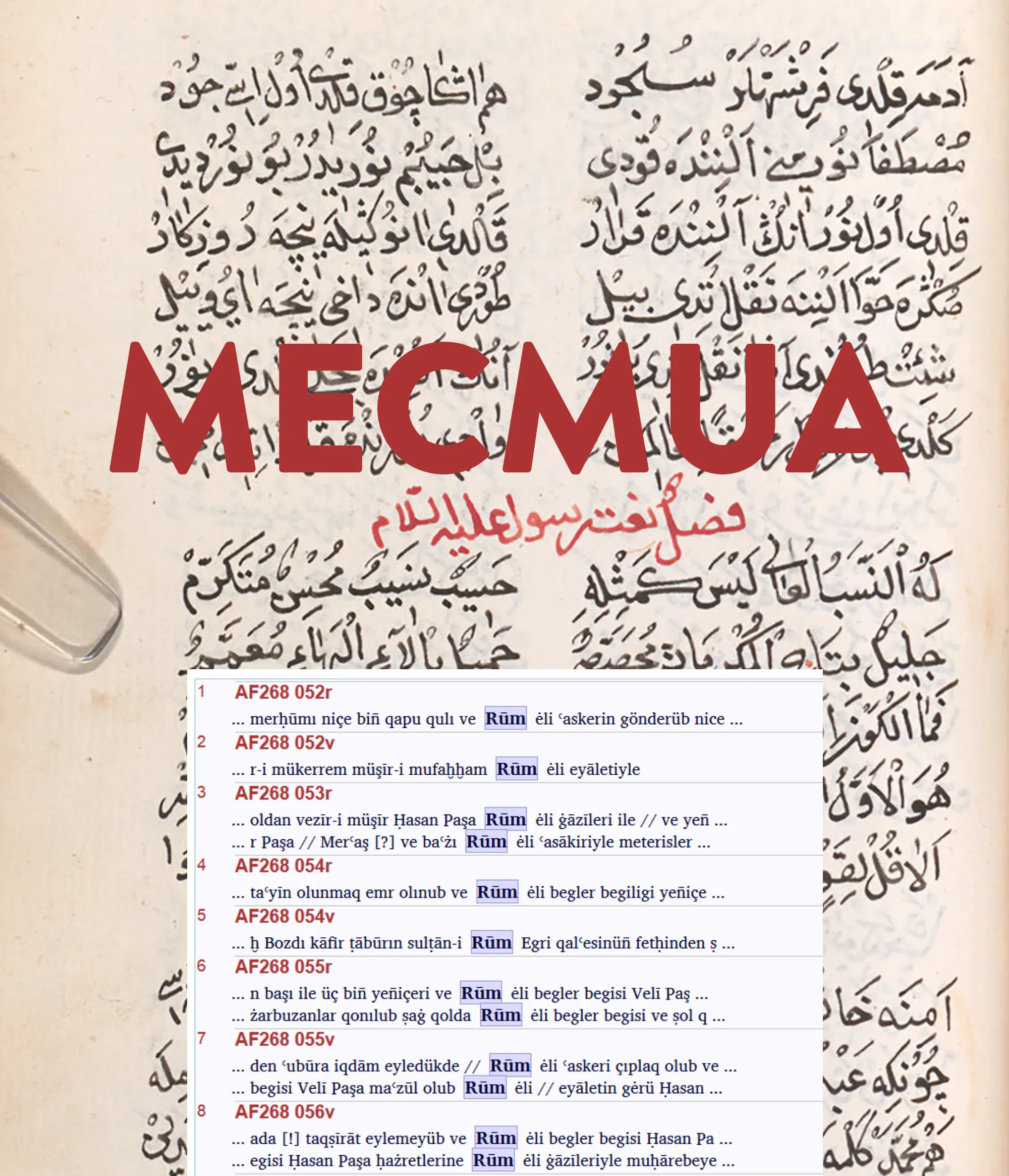
Mecmua
- Hosting-Organisationen
- Universität Wien
The digital versions of so-called _mecmua_s (miscellaneous works collected by one or several authors mainly for private use) grew out of the project Early Modern Ottoman Culture of Learning: Popular Learning between Poetic Ambitions and Pragmatic Concerns (funded by the Austrian Science Fund) which explores aspects of the culture of learning in early modern Ottoman society, in particular those areas of learning used and cultivated outside the official Ottoman institutions of learning, the _medrese_s. The main sources used in the project for this investigation are the encyclopaedia Netaic ül-fünun of the 16th century scholar and poet Nevi and a number of _mecmua_s (collective writings) preserved in the Austrian National Library and the Haus-, Hof- und Staatsarchiv in Vienna (the Austrian State Archives).
The project has been pursuing three main perspectives:
- We explore the early modern culture of what can be called „general“ or „popular learning“ of educated Ottomans with regard to its own historical context and cultural concepts. The Netaic and the _mecmua_s are investigated with reference to their sources, and the backgrounds of their authors and compilers, and also those of their readers and users. A central concern of our investigations is the question of the „popularization“ of learning in particular with respect to how the authors of these works utilised their sources, how learning was represented, and how the works were put to practical ends. Special attention has been attributed to the role of poetry in the Ottoman culture of learning and the way it was applied in the Netaic and the _mecmua_s.
- The philological objectives of the project include the compilation of a full critical edition and translation of the Netaic and an edition and translation of selected parts of the _mecmua_s. The circumstances of the Netaic‘s transmission is particularly interesting. Among the research questions addressed in the project are editing problems in relation to texts that have come down to us in a great number of manuscripts (around 60), some of which differ considerably from each other – a situation not unusual for popular Ottoman works.
- The project also has a strong text technological component. As pioneers in digital Ottoman studies, the researchers focussed from the very beginning of the project on a sound grounding in up-to-date digital methodologies that would ensure an open lifecycle for their data, which would allow them to communicate on their research on a broad and open basis and to allow others to contribute and even continue what was started as part of this groundbreaking project. At the boundaries of traditional philology and digital humanities, they did not only create a digital edition but also started to work on several layers of annotations which make the digital resources an invaluable treasure-trove not only for specialists in Ottoman studies. The texts have been furnished with labels identifying a wide range of named entities, thus allowing readers of the digital texts not only to search for particular persons, but also to dig into natural phenomena such as astronomical entities, plants, illnesses etc. which are of high interest for many scholarly and scientific disciplines.